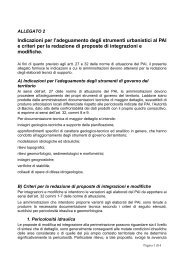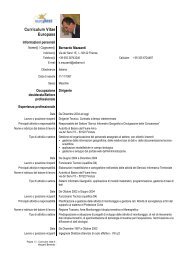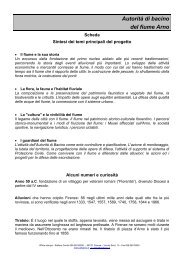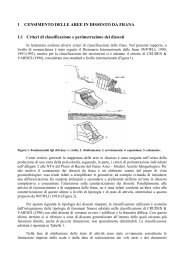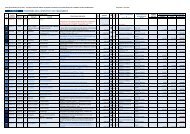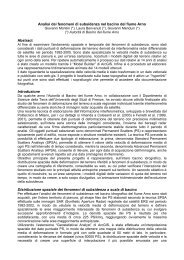11. Confidence Intervals for Flood Return Level Estimates assuming ...
11. Confidence Intervals for Flood Return Level Estimates assuming ...
11. Confidence Intervals for Flood Return Level Estimates assuming ...
You also want an ePaper? Increase the reach of your titles
YUMPU automatically turns print PDFs into web optimized ePapers that Google loves.
216 11 <strong>Flood</strong> <strong>Level</strong> <strong>Confidence</strong> <strong>Intervals</strong>We compare records of white noise and a simple correlated process (Ar[1],cf. Sect. <strong>11.</strong>4.3) with the same (Gaussian) marginal distribution. For differentblock sizes n, we extract 2 000 block maxima from a sufficiently long record.Subsequently, the maxima are modelled with a Gumbel distribution being theappropriate limiting distribution in the Gaussian case [<strong>11.</strong>21]. We measurethe quality of approximation <strong>for</strong> different n using the negative log-likelihood l(cf. Sect. <strong>11.</strong>2.2). Figure <strong>11.</strong>1 shows a decreasing negative log-likelihood withincreasing block sizes n <strong>for</strong> the uncorrelated and the correlated record. This impliesthat the approximation in general ameliorates with block size n. However,neg. Log−Likelihood500 1000 2000White NoiseAR[1]10 20 50 100 500 2000n SizeFig. <strong>11.</strong>1. Quality of approximation of a Gumbel fit to 2000 maxima of realizations of a white noiseand an Ar[1] process <strong>for</strong> different block sizes n. The lines connect the means of 1000 realizations,the shadows mark the mean plus/minus one standard deviation. The vertical line marks a blocksize of n = 365.<strong>for</strong> all n the approximation is better <strong>for</strong> the uncorrelated series than <strong>for</strong> theAr[1] series. This finding is consistent with dependency reducing the effectivenumber of data points [<strong>11.</strong>62], which in this case translates into a reductionof effective block size. The difference in approximation between the correlatedand the uncorrelated case vanishes with increasing n.<strong>11.</strong>2.2 GEV Parameter EstimationTo fully specify the model <strong>for</strong> the extremes, we estimate the Gev parametersfrom the data. <strong>Estimates</strong> can be obtained in several ways: probability weightedmoments [<strong>11.</strong>30, <strong>11.</strong>31], maximum likelihood (Ml) [<strong>11.</strong>12, <strong>11.</strong>53] or Bayesianmethods [<strong>11.</strong>12,<strong>11.</strong>14,<strong>11.</strong>54]. These different approaches have advantages anddrawbacks which are discussed in e.g., [<strong>11.</strong>13,<strong>11.</strong>31] and [<strong>11.</strong>55]. In the following



